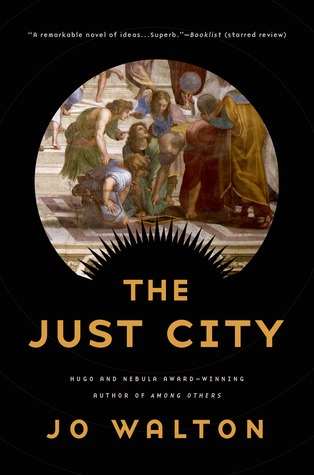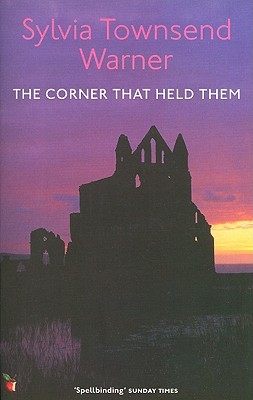Pleasures of 2015
Lesley A. Hall
As far as reading goes, the first few
months of the year were devoted to books submitted for the Arthur C Clarke Award, about which the
code of the Clarke judges imposes silence. As this was my second year of
judging, I have now rotated off the panel, which is a considerable relief, as
in both years the numbers of books submitted ran into 3 figures: and it was a
perhaps closer look than one would entirely like at the way sff books have got
a whole lot thicker since I first started buying them as slender paperbacks in
the 1970s in the specialist bookshop in Soho, Dark They Were and Golden-Eyed. However, reading for this purpose
did introduce me to some works and some authors that perhaps I would not have
picked up spontaneously.
Among the non-award related reading
pleasures of the year, 2015 was the year I discovered Vivian Gornick’s memoirs
and personal essays (though I think I may have read one or two early essays of
hers in anthologies of 70s feminism, back in the day) and devoured everything
of hers that I could that I could get my hands on. I also embarked – partly
stimulated by the sad news of her relatively early death – upon catching up
with Tanith Lee’s rather dauntingly immense oeuvre, much of which has become a
lot more accessible with the advent of e-books. This was also the year of the
first two volumes of Jo Walton’s ‘Thessaly’ trilogy: The Just City and The
Philosopher Kings, which were compelling reading. Also I was very impressed
by Roz Kaveney, Tiny Pieces of Skull as
well as the third episode in her ‘Rhapsody of Blood’ sequence, Resurrections.
Two wonderful books that had long been on
my to-read list finally got read during the course of the year and had a curious
resonance: Sylvia Townsend Warner’s The
Corner That Held Them (1948) about a community of nuns in medieval East
Anglia, and Susan Stinson’s Spider in a
Tree (2013) about Jonathan Edwards, the early eighteenth century Protestant
preacher and theologian of Northampton Massachussets (possibly a figure better
known to US than UK readers?): perhaps because they are both about small remote inward-looking communities, occasionally impinged
upon by the wider world? Another book on religious matters in a very different
mode that I very much enjoyed was Catherine Fox’s Unseen Things Above: set in a very contemporary indeed Anglican
diocese (sequel to Acts and Omissions).
A major re-read
pleasure this year was revisiting E. M. Delafield’s wonderful ‘Provincial Lady’
books, of which I have the compendious 1947 omnibus edition with a very good
introduction by her friend the Irish novelist Kate O’Brien: it contains Diary
of, Goes Further, In America and In Wartime. Lovely to be reminded of just how
good these are.
In the realm of more serious
reading, I particularly enjoyed Catherine Lee’s Policing Prostitution, 1856-1886: Deviance, Surveillance and Morality (2012), insofar as ‘enjoy’ is the
word to use for a meticulous study drawing on a range of resources of women in
the towns of Victorian Kent for whom prostitution was one aspect of the
survival economy. I also read (at last) Gretchen Gerzina’s outstanding classic
work Black London: Life Before
Emancipation (1995).
In the perhaps rather niche category of the
reading pleasures of the researcher, I finally made a visit to the Kinsey Institute Library and
Special Collections, where besides being given an overview generally of
their collections, I was able to consult some of the archives, which made me
very eager to return with a rather longer period of time to spend in them.
Exhibitions that I enjoyed included: Spaces
of Black Modernism at the Tate Britain – small but provocative of thought; From the Forest to the Sea: Emily Carr in
British Columbia at the
Dulwich Picture Gallery; Barbara
Hepworth: Sculpture for a Modern World at Tate
Britain; Sonia
Delaunay and Agnes
Martin at the Tate Modern (though I’m not sure it
was a wise decision to take in exhibitions devoted to these very different
artists on the same day); Julia Margaret Cameron: Influence and
Intimacy at the Science
Museum.
This was
also the year in which a curious British interwar organisation, the Kibbo Kift
Kindred, was rediscovered, with a small but very intriguing exhibition at the
Whitechapel Gallery, Intellectual Barbarians: The Kibbo Kift
Kindred and two really
excellent illustrated books placing it in wider historical context: Annebella
Pollen, The Kindred of the Kibbo
Kift: Intellectual Barbarians and and Cathy Ross and Oliver Bennett, Designing
Utopia: John Hargrave and the Kibbo Kift. This is perhaps mainly exciting to one with my own particular research
interests in 1920s and 1930s Britain and the fringey-er movements of the
period!
One of my
main pleasures this year has been retiring from my full-time job as an
archivist, though I retain an association with the Wellcome
Library as a Library
Research Fellow: but I have been enjoying the pleasures of leisure and not
having to get up to commute into Central London, a prospect made even less
attractive at the moment by the extended closure for much-needed maintenance
work of the nearest Tube station, the week after I had actually retired.
Perhaps
as a result of this leisure, release of pressure, etc, a pleasure I have fallen
into after many years during which it was sidelined is writing fiction: really,
it was an accident, I certainly didn’t think that ‘now I am retired, I will
write My Great Novel’ but just found myself writing something that started as a
brief jeu d’esprit and then growed.




1 comment:
I am so delighted that you enjoyed Spider in a Tree. I am just now home from a month-long writing residency at Hawthornden Castle in Scotland, where I worked on my next novel, inspired by Elizabeth Tuttle, the wild grandmother of Jonathan Edwards. On the way, I passed through London, and spent a great day doing research at the Wellcome Collection. I've also been reading Naomi Mitchison for the first time this year — what a pleasure. Thrive. Susan
Post a Comment